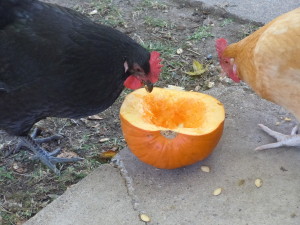Bird flu has taken its toll on Iowa’s poultry since it was first reported in the state in April 2015.
New numbers released today show that more than 34 million chickens and turkeys in Iowa have been affected during that time; most at commercial farms, but also at six backyard flocks.
See how you can keep your backyard chickens healthy here, and read on for more from today’s report:
DES MOINES – The Iowa Department of Agriculture and Land Stewardship and U.S. Department of Agriculture today provided an update on the joint federal-state response to highly pathogenic avian influenza (HPAI) situation in Iowa. The Iowa HPAI Incident Command Post is operating under a Unified Command involving the Iowa Department of Agriculture and Land Stewardship (IDALS and USDA Animal and Plant Health Inspection Service (APHIS) Veterinary Services.
Since April 13, 2015, there have been 77 total premises and 34 million birds affected with H5N2 HPAI in Iowa. There are 35 commercial turkey flocks, 22 commercial egg production flocks, 13 pullet flocks, 1 breeding flock for a mail order hatchery, and 6 backyard flocks.
Depopulation has been completed at all 77 premises. According to USDA, disposal has been completed at 59 premises. Compost, manure and other materials is what still needs to be disposed of from the 18 sites where disposal is still ongoing. All, bio-secure containers that had birds have been disposed of at a landfill or incinerated.
Following disposal, all facilities must be cleaned and then undergo a disinfection process. Disinfection is typically done using heat to increase the temperatures in the building for several days. Other disinfection methods are also being considered.
Following cleaning and disinfection, all sites must remain fallow for 21 days, during which time environmental samplings will be taken to confirm successful cleaning and disinfecting before restocking.
Three sites have completed both the cleaning and disinfection process and are in 21 day fallow period. One turkey site, Calhoun 1, will finish that period this week. An additional turkey site (Pocahontas 4) and a pullet site (Clay 2) are expected to finish in the next two weeks.
The cleaning and disinfection process on turkey sites is anticipated to largely be completed by the end of August. It is expected to continue into August and September for many of the commercial layer operations due to the size and complexity of those buildings and sites.
Following cleaning and disinfection and if all environmental tests are negative, the sites may be allowed to repopulate. However, even if they are allowed to repopulate they will remain under quarantine. After repopulation the flock must undergo at least three tests for avian influenza. Sampling for the test must occur at least seven days apart and all birds sampled must be at least 21 days old.
USDA APHIS currently has 48 staff members in Iowa assisting in the response. In addition, more than 1900 federal contract personnel are in Iowa.
More than 300 state employees have also participated in the disaster response at some point. The Iowa Department of Agriculture and Land Stewardship, Iowa Department of Homeland Security and Emergency Management, Iowa Department of Natural Resources, Iowa Department of Public Health (in conjunction with local public health officials), Iowa Department of Human Services, Iowa Department of Transportation, and Iowa National Guard have all supported the response effort to this disease. Numerous local and county government employees and officials have also provided support and assisted in the response to the disease.
Updated information about the number cases, when they are confirmed and other relevant information will be posted to the Iowa Department of Agriculture and Land Stewardship’s website at www.iowaagriculture.gov/avianinfluenza.asp<http://www.iowaagriculture.gov/avianinfluenza.asp>.
The Center for Disease Control (CDC) and Iowa Department of Public Health considers the risk to people from these HPAI H5 infections in wild birds, backyard flocks and commercial poultry, to be low. No human infections with the virus have ever been detected and there is no food safety risk for consumers.


No Comments Yet